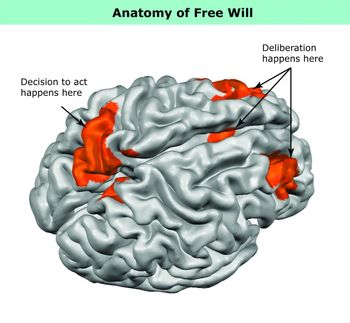Mouse model provides clues to human language development
In the brains of the mice the researchers found alterations which may be closely linked to speech and language development. Their analyses comprise part of an international study led by the Leipzig Max Planck Institute for Evolutionary Anthropology. The findings have been published in Cell .
Scientists of the German Mouse Clinic at Helmholtz Zentrum München have generated and analyzed a mouse model in which parts of the human Foxp2 gene were introduced. Foxp2 is known to be a key gene for language. Since the human and chimpanzee lineages diverged, only minimal genetic alterations have occurred, even with reference to the mouse: The alterations, as scientists surmised, are closely associated with speech and language ability. However, proof on a functional level has been lacking until now.
The Helmholtz scientists in the German Mouse Clinic conduct comprehensive analyses to elucidate which organs are influenced by a gene – in this case the Foxp2 gene. "It is rare for a gene to have only one function," explained Professor Martin Hrabé de Angelis, director of the German Mouse Clinic. That is why a comprehensive research approach like that of the German Mouse Clinic is so crucial – to ensure that relevant gene functions can be identified in the mouse phenotype.
The study of the Foxp2 mice was funded within the scope of the National Genome Research Network (NGFN). As with each mouse lineage studied in the German Mouse Clinic, the Helmholtz scientists analyzed the Foxp2 mice by screening for more than 300 parameters, including the ability to see and hear, bone density, important metabolic functions and a number of neurological functions. The mice carrying the humanized Foxp2 gene showed no physiological abnormalities. However, behavioral tests showed an altered exploratory behavior and reduced movement activity – both results point to altered brain functions. Further investigations carried out by the colleagues in Leipzig supported and confirmed the findings.
In a second step to further substantiate this hypothesis, the Helmholtz scientists analyzed the heterozygous knockout mouse model in which one of the normally two copies of the Foxp2 gene is missing. This loss leads to serious changes: The ability of the mice to hear and learn is diminished in comparison to their healthy littermates; they have more fat and less muscle, and they eat more and consume more energy. Moreover, they have altered blood parameters.
"We were able to show that the Foxp2 gene has significant influence on various organ systems," Martin Hrabé de Angelis said. "Our research supports the hypothesis of our colleagues in Leipzig that specifically these alterations in the brain were the evolutionary step that gave humans the advantage of speech and language." Furthermore, the involvement of the Hrabé de Angelis team in the Leipzig study demonstrates the usefulness of the German Mouse Clinic. Only through broad-based, comprehensive analysis can scientists recognize even unexpected effects of genetic defects and thus identify additional functions of known genes.
Original Publication: Wolfgang Enard et al.: "A Humanized Version of Foxp2 Affects Cortico-Basal Ganglia Circuits in Mice."; Cell 2009, Volume 137, Issue 5, 961-971.
Other news from the department science

Get the life science industry in your inbox
By submitting this form you agree that LUMITOS AG will send you the newsletter(s) selected above by email. Your data will not be passed on to third parties. Your data will be stored and processed in accordance with our data protection regulations. LUMITOS may contact you by email for the purpose of advertising or market and opinion surveys. You can revoke your consent at any time without giving reasons to LUMITOS AG, Ernst-Augustin-Str. 2, 12489 Berlin, Germany or by e-mail at revoke@lumitos.com with effect for the future. In addition, each email contains a link to unsubscribe from the corresponding newsletter.






















































